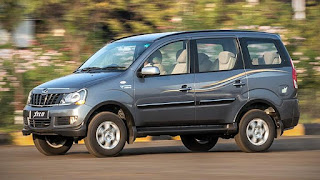Route Planning for drivers
Route Planning for drivers
Route planning can be divided to personalized route planningand dynamic route planning. From the view of recommendation[11], route planning includes taxi-hunting recommendation,energy-efficient driving route recommendation, fast drivingroute recommendation, and so on. A route-planning algorithmcan be divided to global and local algorithms, according tothe scope of considered trajectories. Local algorithms are alsocalled incremental algorithms, which match each track point tothe appropriate sections by using a greedy strategy. Such algo-rithms usually find a local optimum section to match each trackpoint based on the similarity between distance and angle [18]–[20]. On the other hand, the considered object of a global algo-rithm is usually the whole trajectories. Its goal is to find the roadsequence that is the closest to the track in some sense. In recentyears, some works have used Frechet distance [16] and weakFrechet distance to compare the similarity between tracks [17].However, previous works usually consider the recommen-dation system from the drivers’ view. They obviously ignorethe requirement of passengers. We consider that it is worthy toanswer the following questions when a person is waiting to get ataxi ride: Is it easy to get a taxi ride at the current location? Howlong will it take until the first vacant taxi arrives at the currentlocation? Where is the nearest “best place” to get a taxi? How long will it be there? In this paper, we introduce a new technol-ogy, called taxi hunting, to answer the question mentioned
In this paper, we solve the following two problems by usinglarge-scale data generated by a taxi GPS device: 1) calculatethe probability of getting a taxi in a particular place at a certaintime; 2) calculate the waiting time until the first vacant taxi hitsthe requirement. Here are some basic definitions.A. Basic DefinitionsSuppose that there are a collection ofntaxis, i.e.,Taxi={Taxi1,...,Taxin}. Every piece of GPS data is denoted as aGPS data point. Here, we give a more detailed definition [5].Definition 1. GPS Data Point:A piece of GPS data pointrecords thelongtitudei,j,latitudei,j, speedvi,j, the directiondiri,jand running stateState−runi,j, and so on, which iswritten asgpsi,jthat generated by a taxiTaxiiwith the GPSequipment at timetj. That isgpsi,j={Taxii,tj,longtitudei,j,latitudei,j,vi,j,diri,j, State−runi,j}.(1)A map at a time consists of the GPS data on that timeand the corresponding taxi’s speed vector. Map difference candistinguish the differences between maps on different times,to store big data efficiently. Therefore, the precision of mapdifference only affects the number of file blocks. The degreeof precision has no effect on final results and just has a weakimpact on file block.Definition 2. Map Difference:Given a timeti,Mapirepre-sents the map onti, andRirepresents the eigenvalue ofMapi.Then, the differenceΔMap(t2,t1)ofMap1andMap2can bedefined asΔMap(t2,t1)=Map2−Map1.(2)Similarly, the eigenvalue difference betweenMap1andMap2can be defined as follows (the specific calculationmethod ofRiin Section V-A):ΔR(t2,t1)=R2−R1.(3)Definition 3. Frequent Surface:The frequent surface is 3-Dcurved surfaces, defined asTCM(x, y, z), wherexrepresentsthe longitude, andyrepresents the latitude. Then, we definedzasz=count(x, y), which means the number of taxi flows onthePoint(x, y). Some locations have a large number of taxiflows, and we call these points as hotspots. Meanwhile, someareas have a large number of taxi flows, which are called hotspotzones. Each hot point is the smallest indivisible hotspot zone.One way to define hotspots is as follows.Definition 4. Hotspot:For each GPScoordinates(x, y)onthe map,x represents the longitude, and y means the latitude. If the number of taxis through the point within one day is greater than the thresholdK, we called the point a hotspot, denotedbyHotSpot(x, y). According to definition 3, hotspot can bedefined by a collection represented as(x, y)|z=count(x, y)≥K.(4Definition 5. Hotspot Zone:The hotspot zone gets the ad-jacent hotspots together; at the same time, thecount(x, y)of the adjacent hotspots is similar. A hotspotHotSpot(x, y)is selected to represent the hotspot zone, denoted byHotSpotZone(x, y). We can calculate the running track of ataxi by using GPS data. Therefore, it is accurate and feasibleto get the taxi trajectory from GPS data. Hence, we make thefollowing abstract. First, distinguish taxi trajectories accordingto the identification of each car, i.e., every taxi has its own path,and those trajectories are independent of each other. Second,trajectories are the historical data of taxis running.
If there is atrajectory, a taxi must go through this route at some moment toform the trajectory. In the following, the definition of trajectoryis introduced, and the related notations are given.Definition 6. Trajectory:A taxi trajectoryTris the runningpath of aTaxiiduring the period of time (fromtjtotk)and is represented by the GPS data(gpsi,j,...,gpsi,k).Weusegpsi,j,...,gpsi,kto display the trajectory ofTaxiiduringthe period of time. Therefore, all of the trajectories consist ofa collection of trajectory. Using trajectory notation, a formaldefinition of frequent trajectory is easily given as follows.Definition 7. Frequent Trajectory:If the appearance numberof a trajectory is recorded ascount(Tr), frequent trajectoriesare trajectories whose appearance number is greater than thespecified thresholdFT. That isFrequentTrajectory|Tr:count(Tr)>FT.(5)Definition 8. FTG:Suppose that we have a set of hotspotshs1,...,hsk. A hotspot database is denoted by a directed graphG=V,E. The set of hotspotsVdenotes all hotspots, i.e.,V=hs1,...,hsk.Eis a set of all edges. https://srisivasakthitravels.com/
https://www.facebook.com/Sri-Siva-sakthi-Travels-102008227873939/
https://goo.gl/maps/1rNVoifRFQ9snSor6
Route planning can be divided to personalized route planningand dynamic route planning. From the view of recommendation[11], route planning includes taxi-hunting recommendation,energy-efficient driving route recommendation, fast drivingroute recommendation, and so on. A route-planning algorithmcan be divided to global and local algorithms, according tothe scope of considered trajectories. Local algorithms are alsocalled incremental algorithms, which match each track point tothe appropriate sections by using a greedy strategy. Such algo-rithms usually find a local optimum section to match each trackpoint based on the similarity between distance and angle [18]–[20]. On the other hand, the considered object of a global algo-rithm is usually the whole trajectories. Its goal is to find the roadsequence that is the closest to the track in some sense. In recentyears, some works have used Frechet distance [16] and weakFrechet distance to compare the similarity between tracks [17].However, previous works usually consider the recommen-dation system from the drivers’ view. They obviously ignorethe requirement of passengers. We consider that it is worthy toanswer the following questions when a person is waiting to get ataxi ride: Is it easy to get a taxi ride at the current location? Howlong will it take until the first vacant taxi arrives at the currentlocation? Where is the nearest “best place” to get a taxi? How long will it be there? In this paper, we introduce a new technol-ogy, called taxi hunting, to answer the question mentioned
In this paper, we solve the following two problems by usinglarge-scale data generated by a taxi GPS device: 1) calculatethe probability of getting a taxi in a particular place at a certaintime; 2) calculate the waiting time until the first vacant taxi hitsthe requirement. Here are some basic definitions.A. Basic DefinitionsSuppose that there are a collection ofntaxis, i.e.,Taxi={Taxi1,...,Taxin}. Every piece of GPS data is denoted as aGPS data point. Here, we give a more detailed definition [5].Definition 1. GPS Data Point:A piece of GPS data pointrecords thelongtitudei,j,latitudei,j, speedvi,j, the directiondiri,jand running stateState−runi,j, and so on, which iswritten asgpsi,jthat generated by a taxiTaxiiwith the GPSequipment at timetj. That isgpsi,j={Taxii,tj,longtitudei,j,latitudei,j,vi,j,diri,j, State−runi,j}.(1)A map at a time consists of the GPS data on that timeand the corresponding taxi’s speed vector. Map difference candistinguish the differences between maps on different times,to store big data efficiently. Therefore, the precision of mapdifference only affects the number of file blocks. The degreeof precision has no effect on final results and just has a weakimpact on file block.Definition 2. Map Difference:Given a timeti,Mapirepre-sents the map onti, andRirepresents the eigenvalue ofMapi.Then, the differenceΔMap(t2,t1)ofMap1andMap2can bedefined asΔMap(t2,t1)=Map2−Map1.(2)Similarly, the eigenvalue difference betweenMap1andMap2can be defined as follows (the specific calculationmethod ofRiin Section V-A):ΔR(t2,t1)=R2−R1.(3)Definition 3. Frequent Surface:The frequent surface is 3-Dcurved surfaces, defined asTCM(x, y, z), wherexrepresentsthe longitude, andyrepresents the latitude. Then, we definedzasz=count(x, y), which means the number of taxi flows onthePoint(x, y). Some locations have a large number of taxiflows, and we call these points as hotspots. Meanwhile, someareas have a large number of taxi flows, which are called hotspotzones. Each hot point is the smallest indivisible hotspot zone.One way to define hotspots is as follows.Definition 4. Hotspot:For each GPScoordinates(x, y)onthe map,x represents the longitude, and y means the latitude. If the number of taxis through the point within one day is greater than the thresholdK, we called the point a hotspot, denotedbyHotSpot(x, y). According to definition 3, hotspot can bedefined by a collection represented as(x, y)|z=count(x, y)≥K.(4Definition 5. Hotspot Zone:The hotspot zone gets the ad-jacent hotspots together; at the same time, thecount(x, y)of the adjacent hotspots is similar. A hotspotHotSpot(x, y)is selected to represent the hotspot zone, denoted byHotSpotZone(x, y). We can calculate the running track of ataxi by using GPS data. Therefore, it is accurate and feasibleto get the taxi trajectory from GPS data. Hence, we make thefollowing abstract. First, distinguish taxi trajectories accordingto the identification of each car, i.e., every taxi has its own path,and those trajectories are independent of each other. Second,trajectories are the historical data of taxis running.
If there is atrajectory, a taxi must go through this route at some moment toform the trajectory. In the following, the definition of trajectoryis introduced, and the related notations are given.Definition 6. Trajectory:A taxi trajectoryTris the runningpath of aTaxiiduring the period of time (fromtjtotk)and is represented by the GPS data(gpsi,j,...,gpsi,k).Weusegpsi,j,...,gpsi,kto display the trajectory ofTaxiiduringthe period of time. Therefore, all of the trajectories consist ofa collection of trajectory. Using trajectory notation, a formaldefinition of frequent trajectory is easily given as follows.Definition 7. Frequent Trajectory:If the appearance numberof a trajectory is recorded ascount(Tr), frequent trajectoriesare trajectories whose appearance number is greater than thespecified thresholdFT. That isFrequentTrajectory|Tr:count(Tr)>FT.(5)Definition 8. FTG:Suppose that we have a set of hotspotshs1,...,hsk. A hotspot database is denoted by a directed graphG=V,E. The set of hotspotsVdenotes all hotspots, i.e.,V=hs1,...,hsk.Eis a set of all edges. https://srisivasakthitravels.com/
https://www.facebook.com/Sri-Siva-sakthi-Travels-102008227873939/
https://goo.gl/maps/1rNVoifRFQ9snSor6




Comments
Post a Comment